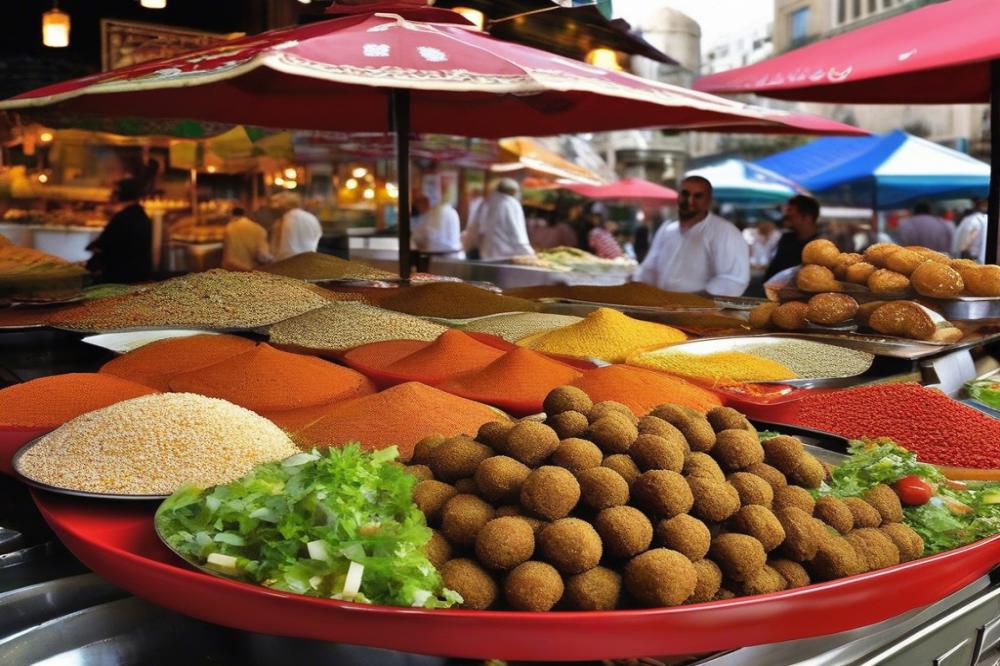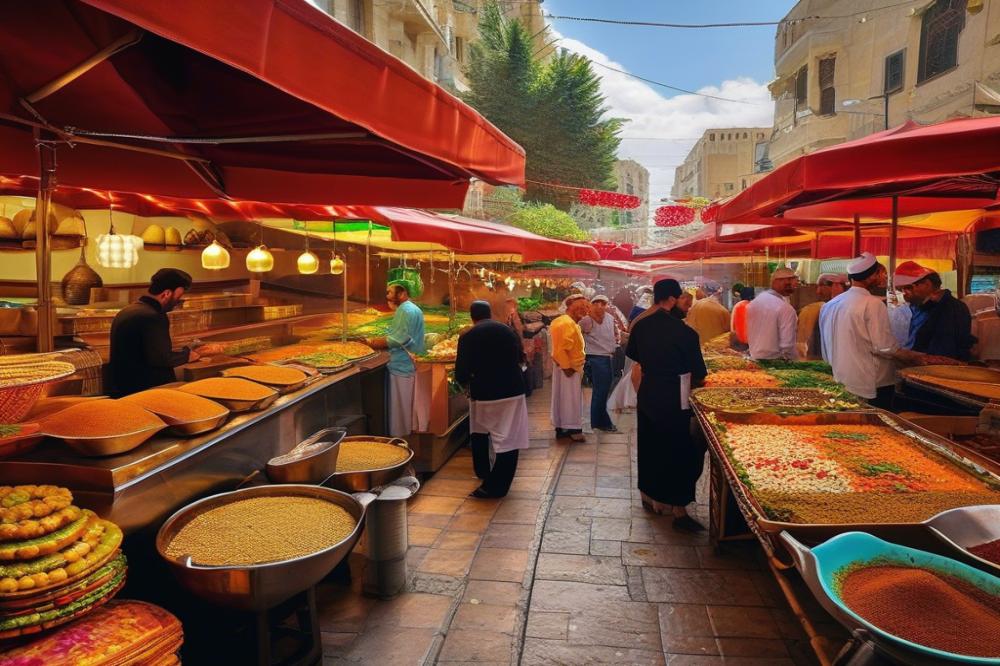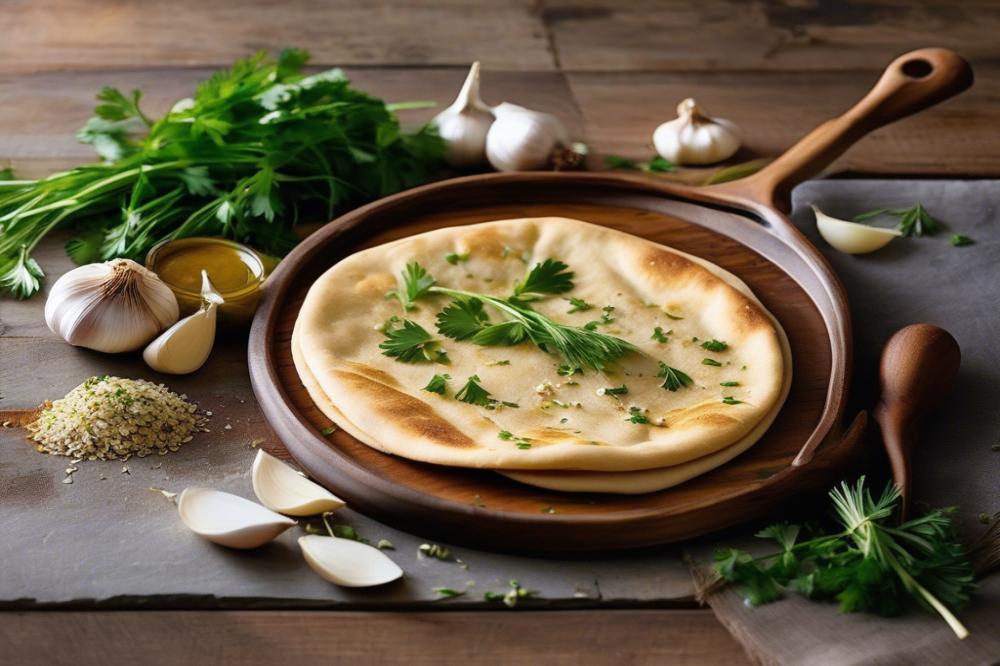Introduction
Lebanese cuisine is a vibrant tapestry of flavors, colors, and traditions. It showcases a variety of dishes that reflect the rich history of the region. Among its many culinary treasures, one dish stands out as a beloved staple: falafel. Often found at street food stalls and casual eateries, falafel is a crunchy, golden treat loved by many.
In Lebanese street food, falafel holds a special significance. This iconic dish is made from chickpeas, blended with garlic, cumin, coriander, and parsley. These ingredients create a delicious mixture that is then fried until crispy. People often enjoy falafel wrapped in warm pita bread, topped with tahini sauce and fresh vegetables. This easy-to-eat meal reflects the bustling nature of street food culture.
Another reason for its popularity lies in its vegetarian appeal. Those seeking meatless options can indulge without compromising on flavor. The combination of spices and herbs in a good Falafel Recipe allows everyone to enjoy a tasty and filling dish. Regardless of dietary preferences, Lebanese Falafel ensures satisfaction for all.
Lebanese Falafel Recipe

Ingredients list with quantities
- 1 cup dried chickpeas
- 1/2 cup fresh parsley, chopped
- 1/4 cup fresh cilantro, chopped
- 1 small onion, chopped
- 2 cloves garlic, minced
- 1 teaspoon ground cumin
- 1 teaspoon ground coriander
- 1/2 teaspoon baking powder
- 1/4 cup tahini
- Salt and pepper to taste
- Oil for frying
Cooking instructions
Start by soaking the chickpeas overnight in water. This step is crucial for softening the legumes. The next day, drain and rinse them. Grab a food processor and add the soaked chickpeas, chopped parsley, cilantro, onion, and minced garlic. Blend until the mixture is coarse yet combined. It shouldn’t be too smooth; some texture is key.
Next, mix in the ground cumin, coriander, baking powder, tahini, and season with salt and pepper. With clean hands, shape the mixture into small balls or patties—whichever you prefer. The size can vary, but make them uniform for even cooking.
Heat oil in a deep pan over medium-high heat. Carefully place the falafel in the hot oil, frying them until they take on a golden brown color. This will take about 3-4 minutes on each side. Remove the fried falafel with a slotted spoon and drain them on paper towels to absorb excess oil.
Enjoy your homemade falafel while hot. Serve it with tahini sauce for dipping or tuck it into warm pita bread. This Middle Eastern dish pairs well with fresh veggies and pickles, making for an excellent vegetarian street food.
Nutritional information for all ingredients
Chickpeas are a rich source of protein and fiber, making them a nutritious base. Tahini contributes healthy fats, promoting a balanced diet. Garlic not only enhances the flavor but also offers numerous health benefits. Cumin and coriander provide aromatic notes and antioxidant properties. The fresh herbs bring in vitamins and minerals that are essential for good health.
Cultural Significance of Falafel

Historical Background of Falafel in Middle Eastern Food
Falafel has deep roots in the Middle Eastern culinary scene. Its origins can be traced back to ancient times, possibly as early as the 5th century. Some food historians believe it started in Egypt, where fava beans were first used. Over time, variations emerged throughout the region. Chickpeas eventually replaced fava beans in many areas, including Lebanon. This shift is significant because it reflects the adaptability of traditional recipes.
Falafel’s Place in Lebanese Culture and Social Gatherings
In Lebanon, falafel is more than just a dish; it embodies community spirit. It is often enjoyed during social gatherings and family meals. Streets buzz with vendors selling warm, crispy falafel sandwiches. Garlic, tahini, cumin, and coriander create a delightful blend in every bite. Fresh parsley adds a touch of brightness. Sharing a plate of falafel fosters connections between friends and family. It symbolizes hospitality, a key value in Lebanese culture.
Global Popularity and Variations
Over the years, falafel has gained international fame. It is now a beloved choice for vegetarian street food across the globe. Many countries have put their twist on this classic dish. In some places, people use different herbs or spices to create unique flavors. Others might serve it with a variety of sides. This adaptability highlights how food can bridge cultures and promote understanding. Homemade falafel continues to be cherished by many, allowing families to connect with their traditions while enjoying a hearty meal.
Serving Suggestions

Classic accompaniments such as tahini sauce, pickles, and a fresh salad perfectly complement falafel. All these elements add vibrant flavors that enhance the dish. A tahini sauce made from sesame paste, lemon juice, and garlic is particularly popular. This creamy sauce brings richness to the crunchy texture of homemade falafel.
Other popular sides include tabbouleh and pickled vegetables. Tabbouleh offers a refreshing contrast with its parsley and bulgur wheat. Pickles add a tangy crunch, balancing the richness of tahini. Together, they create a well-rounded plate that showcases Middle Eastern flavors.
Creative Serving Options
Wraps can be a delightful and easy way to enjoy falafel on the go. Chickpeas blended with herbs can be tucked into pita bread along with lettuce and cucumbers. This combination makes for a satisfying meal, perfect for those who love street food.
Bowl presentations also provide a fun experience. Layer falafel over a bed of rice or quinoa, and sprinkle with diced tomatoes and parsley. This option allows everyone to customize their meal according to their tastes.
Popularity in Vegetarian and Vegan Diets
Falafel has gained immense popularity in vegetarian and vegan diets. Made from chickpeas, this dish is naturally rich in protein and flavor without using animal products. Many people turn to falafel when looking for hearty and delicious plant-based options.
The high nutritional value makes it a great choice for those seeking healthier meals. Spices like cumin and coriander not only add flavor but also offer health benefits. These ingredients contribute to falafel’s appeal among health-conscious individuals.
Tips for Serving at Parties or Gatherings
When hosting a gathering, consider setting up a falafel bar. Guests can build their own plates or wraps, using a variety of toppings. Garlic sauce, various veggies, and different dips create an interactive dining experience.
Additionally, small bites of falafel can be served as appetizers. Skewering them with toothpicks makes for an easy way to grab a snack. Pair this with small bowls of tahini and sauce for dipping.
Plan for a mix of flavors to cater to different tastes. Offering gluten-free pita or lettuce wraps can accommodate guests with dietary restrictions. Creating a colorful spread is also visually appealing, which adds to the overall atmosphere of your gathering.
Tips for Making the Best Lebanese Falafel

Choosing the Right Chickpeas
Selecting the proper chickpeas is crucial for authentic falafel. Always opt for dry chickpeas instead of canned ones. Soaking them overnight works wonders. This method hydrates the legumes, making them perfect for blending. During this soaking time, they absorb water and swell, creating a fantastic texture. Each chickpea should feel firm yet tender once prepared.
Importance of Texture in the Mixture
Achieving the right texture is essential for great falafel. Blend the soaked chickpeas with garlic, cumin, and coriander until they are coarse, not smooth. This grainy consistency helps the falafel hold together without being too dense. Fresh parsley adds a pop of color and contributes to its unique flavor. Balance the mixture; it must not be too dry or too runny.
How to Achieve the Perfect Frying Temperature
Frying at the right temperature can make a world of difference. Heat your oil to about 350°F (175°C) before adding the falafel balls. A test is simple: drop in a small piece of the mixture. If it sizzles and rises, you’re good to go. Too high temperatures may cause the outside to burn before the inside cooks through. Too low, and they absorb too much oil, making them greasy.
Making Falafel in Advance: Storage Tips
Preparing falafel in advance can save time. Shape them into balls or patties, and place them on a baking sheet lined with parchment paper. Afterward, freeze them for a couple of hours. Once frozen, transfer them to a sealable bag for storage. You can fry them straight from the freezer later. This method keeps them fresh and ready for a quick meal. When it’s time to cook, follow the frying tips for the best results.
Final Thoughts on Homemade Delights
Lebanese falafel holds a special place in the hearts of many food lovers. Its crisp exterior and flavorful center make it popular among street food enthusiasts. This dish, usually made with chickpeas and spices, captures the essence of Middle Eastern cuisine in every bite. Experiencing the rich flavors of this beloved treat at home can be truly rewarding.
Consider trying to make your own falafel. The process may seem daunting at first, but it’s quite accessible. With a few ingredients and some patience, you can create a dish that rivals what you find in the streets of Beirut. Experimenting with the spices and herbs allows for personalization, making it an enjoyable challenge.
Enjoy the pleasure of crafting these delicious bites right in your own kitchen. When paired with fresh pita or crisp vegetables, the result is satisfying and comforting. Don’t forget to add tahini as a dip or dressing for extra flavor. Sharing this meal with friends and family can turn an ordinary evening into a special occasion, bringing a touch of Lebanese culture into your home.
Ultimately, savoring homemade falafel can be an adventure. Embrace the chance to explore this iconic dish, and enjoy each step along the way. Creating your own version allows for connection to the rich culinary traditions of Lebanon, transforming you into a part of its culinary story.



